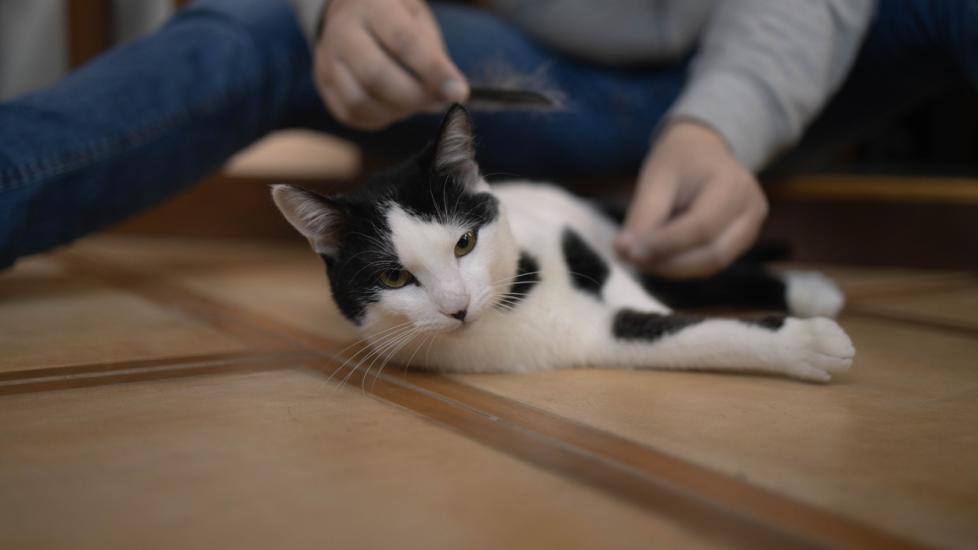Walking Dandruff in Cats
Walking Dandruff in Cats
Walking dandruff, or cheyletiellosis in cats, is a skin condition caused by the highly contagious Cheyletiella mites. On cats, these mites feed on skin dander and skin secretions, causing extensive dandruff and other symptoms.
A Cheyletiella infestation is also referred to as walking dandruff. The irritation caused by the mites causes scaling of the skin. These scales are moved around by the mites’ activity. This gives the impression of walking dandruff.
Cheyletiella mites are very mobile and can easily infect cats, dogs, and rabbits. They can even affect humans, causing small, itchy bites. Fortunately, they can’t survive permanently on humans, but they can be a nuisance.
Causes of Walking Dandruff in Cats
Walking dandruff in cats can be caused by:
-
Direct contact with other animals with cheyletiellosis.
-
Being in an animal shelter, a grooming establishment, or a kennel with other animals that have cheyletiellosis. Mites can be transmitted through brushes, leashes, collars, and grooming tools.
-
Reinfestation from recently contaminated bedding or housing.
Cheyletiella have been found on fleas, lice, and flies, so these insects may help to transport Cheyletiella between pets.
Walking Dandruff Symptoms in Cats
Cats with walking dandruff usually show these symptoms:
-
Excessive skin scaling and dandruff, generally along the back
-
Hair loss
-
Crusty sores
-
Some cats may have very mild or no symptoms
Diagnosis of Walking Dandruff in Cats
If your cat has symptoms of walking dandruff, your vet may confirm the diagnosis by:
-
Brushing your cat and examining the debris under a microscope
-
Using tape to pick up flakes from their skin and examining them under a microscope
-
Taking superficial skin scrapings to examine under a microscope
-
Plucking hairs to look for attached eggs, also under a microscope
Mites may be difficult to find, so the diagnosis is sometimes made based on a cat’s response to treatment. In some cases, mites and eggs may be detected with a stool test, particularly in cats that overgroom and ingest the mites.
Treatment for Walking Dandruff in Cats
Because these mites are so contagious, if you have an outbreak on one animal, you’ll need to treat all dogs, cats, and rabbits in your home or that come into contact with your cat.
There is no licensed product for the treatment of these mites. However, walking dandruff can usually be treated by most flea and tick control products.
Repeated treatment may be necessary, depending upon what product you use. Your veterinarian will prescribe a product best suited for your pets.
Treatment of the house is generally not needed if you use long-acting flea preventatives. However, since mites can live off the host for up to 10 days, you may need to treat your home with a flea control product to kill roaming mites that could re-infect your cat or other pets.
Recovery and Management of Walking Dandruff in Cats
Routine use of most flea preventatives on your cat will help prevent recurrences.
Featured Image: iStock.com/MJimages
